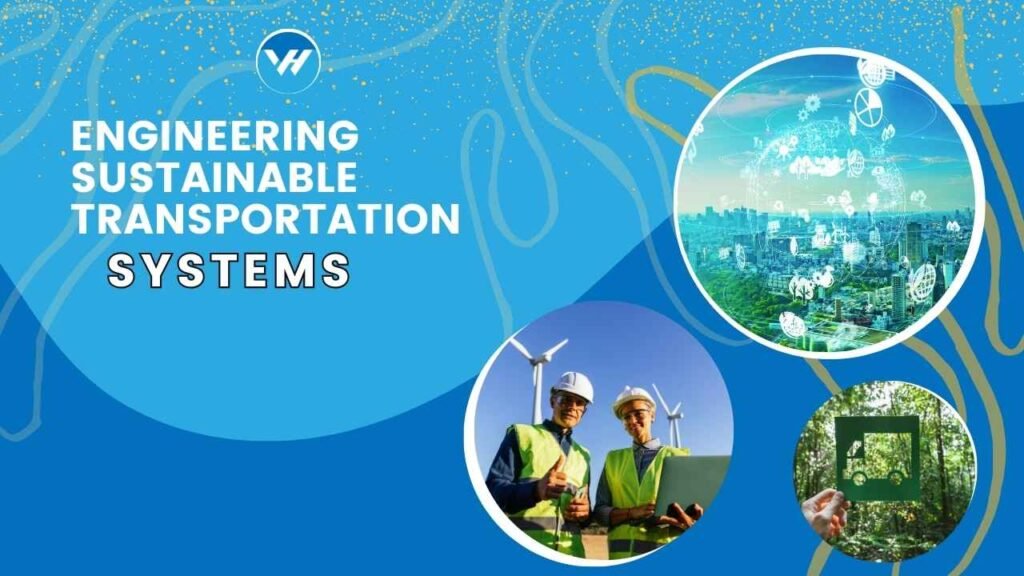Hey there! Ever wondered how we can get from point A to point B without leaving a massive carbon footprint? That’s where sustainable transportation comes in. It’s all about creating systems that are eco-friendly, economically viable, and socially beneficial. And guess what? Engineers play a huge role in making this happen. Let’s dive into the world of sustainable transportation and see how engineering is shaping our future roads, rails, and skies.

Table of Contents
ToggleThe Need for Sustainable Transportation
So, why all the fuss about sustainable transportation? Well, the planet isn’t getting any younger, and our traditional transportation methods are taking a toll on the environment. Cars, trucks, and planes spew out a ton of greenhouse gases, contributing to climate change. But that’s not all! Sustainable transportation also makes economic sense and brings heaps of social benefits.
Environmental Impact
First things first, the environment. Conventional vehicles run on fossil fuels, which means they emit carbon dioxide and other pollutants. This not only harms the planet but also affects our health. Sustainable transportation aims to cut down these emissions by using cleaner energy sources.
Economic Benefits
Think sustainable transportation is just about saving the planet? Think again! It’s also about saving money. Efficient transport systems reduce fuel consumption and operational costs. Plus, they create jobs in new industries, like renewable energy and smart technology.
Social Benefits
Let’s not forget the social perks. Sustainable transportation means fewer traffic jams, better air quality, and healthier lifestyles. Imagine cycling to work on a safe, dedicated bike lane or hopping on a reliable, electric bus. Sounds good, right?
Key Components of Sustainable Transportation Systems
Now that we know why we need it, let’s break down the key components of sustainable transportation systems.
Renewable Energy Sources
The heart of sustainable transportation is renewable energy. Think solar-powered buses, electric cars charged by wind energy, and trains running on biofuels. These alternatives drastically reduce our carbon footprint.
Efficient Public Transit Systems
A robust public transit system is a game-changer. Buses, trams, and subways powered by clean energy can move a lot of people with minimal environmental impact. Plus, they help reduce traffic congestion.
Non-Motorized Transport (Cycling and Walking)
Who says transport always needs an engine? Promoting cycling and walking not only cuts emissions but also boosts public health. Cities with well-planned bike lanes and pedestrian pathways are a win-win for everyone.
Advanced Vehicle Technologies
From electric cars to hydrogen fuel cell vehicles, advanced technologies are at the forefront of sustainable transportation. These innovations make our rides cleaner, quieter, and more efficient.
Role of Engineering in Sustainable Transportation
Engineers are the unsung heroes behind sustainable transportation. They design, build, and maintain the systems that keep us moving green.
Infrastructure Development
Building sustainable transport systems starts with solid infrastructure. This includes everything from eco-friendly roads and bridges to electric vehicle charging stations and bike-sharing docks.
Smart City Integration
Ever heard of smart cities? These urban areas use technology to improve the quality of life. Engineers integrate transportation systems with smart technology to create efficient, responsive networks that reduce congestion and pollution.
Transportation Planning and Policy
Good planning and sound policies are crucial. Engineers work with policymakers to develop strategies that promote sustainable transport, like congestion pricing, subsidies for electric vehicles, and investment in public transit.
Technological Innovations
Innovation is at the core of engineering. Whether it’s developing more efficient batteries for electric cars or designing autonomous buses, engineers are constantly pushing the boundaries to make transportation greener.
Challenges in Engineering Sustainable Transportation
Of course, it’s not all smooth sailing. There are several challenges that engineers face in the quest for sustainable transportation.
Funding and Investment
Building and maintaining sustainable transport systems require significant investment. Securing funding from governments, private sectors, and international bodies can be a tough nut to crack.
Technological Barriers
While technology is advancing rapidly, there are still barriers to overcome. For instance, electric vehicles need better batteries with longer life and quicker charging times.
Public Acceptance
Change is hard, and getting the public on board can be challenging. People might be hesitant to give up their gas-guzzlers or might not trust new technologies like autonomous vehicles.
Regulatory Hurdles
Regulations play a big role in transportation. Navigating the complex web of laws and standards to implement new systems can be a daunting task for engineers.
Amsterdam’s Electric Public Transit
Amsterdam is electrifying its public transit. From buses to ferries, the city is shifting to electric-powered vehicles, drastically cutting emissions.
Singapore’s Smart Traffic Management
Singapore uses smart technology to manage its traffic. Real-time data and AI help optimize traffic flow, reducing congestion and emissions.
Curitiba’s Bus Rapid Transit (BRT) System
Curitiba in Brazil is known for its efficient BRT system. The city’s buses run on dedicated lanes, ensuring fast and reliable service that reduces the reliance on private cars.
Future Trends in Sustainable Transportation
What’s next in the world of sustainable transport? Here are some trends to watch out for.
Autonomous Vehicles
Self-driving cars and buses could revolutionize transportation, making it safer and more efficient.
Electric and Hydrogen Fuel Cell Vehicles
Electric and hydrogen vehicles are set to become mainstream, offering cleaner alternatives to traditional combustion engines.
Hyperloop and High-Speed Rail
Imagine traveling from one city to another in minutes! Hyperloop and high-speed rail technologies promise to make long-distance travel faster and greener.
Integrated Multimodal Transportation Networks
Future transport systems will be highly integrated, allowing seamless transitions between different modes of transport – from bikes to buses to trains.
The Role of Virtual Help in Engineering Education
Studying sustainable transportation engineering? Virtual Help can be your best friend.
Finding Tutors for Sustainable Transportation Engineering
Need help with your assignments? Virtual Help connects you with expert tutors who specialize in sustainable transportation engineering.
Assignment Help and Resources
From research papers to project guidance, Virtual Help offers a wealth of resources to ace your assignments.
Benefits of Using Virtual Help for Students
With Virtual Help, you get personalized assistance, flexible learning schedules, and access to a wide range of study materials. It’s like having a classroom in your pocket!
Conclusion
Sustainable transportation is not just a buzzword; it’s the future. Engineers are at the heart of this transformation, designing systems that are not only eco-friendly but also economically and socially beneficial. By overcoming challenges and embracing innovation, we can pave the way for a cleaner, greener world. And if you’re a student diving into this exciting field, Virtual Help is here to support you every step of the way.
FAQs
What is sustainable transportation?
Sustainable transportation refers to systems designed to be environmentally friendly, economically viable, and socially beneficial. It includes using renewable energy, efficient public transit, and advanced vehicle technologies.
How can engineering contribute to sustainable transportation?
Engineers design and develop the infrastructure, technologies, and policies needed to create and maintain sustainable transportation systems.
What are the benefits of sustainable transportation?
Benefits include reduced environmental impact, cost savings, improved public health, and enhanced quality of life.
What challenges do engineers face in implementing sustainable transportation systems?
Challenges include securing funding, overcoming technological barriers, gaining public acceptance, and navigating regulatory frameworks.
How can students get help with engineering assignments related to sustainable transportation?
Students can use Virtual Help, an online platform that connects them with expert tutors and provides resources for assignments and projects in sustainable transportation engineering.





